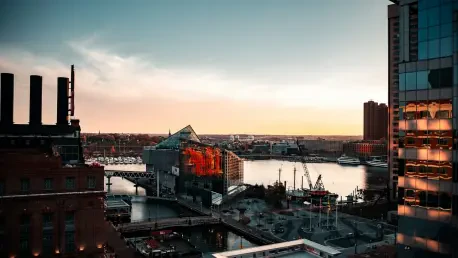As we dive into the complexities of energy efficiency and climate goals in Maryland, I’m thrilled to speak with Christopher Hailstone, a seasoned expert in energy management, renewable energy, and electricity delivery. With his deep knowledge of grid reliability and utility operations, Christopher offers unparalleled insights into programs like Maryland’s EmPOWER initiative. Today, we’ll explore how this ratepayer-funded program is shaping energy savings, its impact on greenhouse gas reductions, the challenges faced by low-income communities, and the varying performance of utilities across the state.
Can you give us a broad picture of what the EmPOWER program in Maryland is all about and what it’s trying to accomplish?
Absolutely, Silvia. The EmPOWER program is a ratepayer-funded initiative in Maryland designed to boost energy efficiency across the state. Its primary goals are to reduce energy consumption and cut greenhouse gas emissions, which are critical for meeting the state’s climate targets. By incentivizing energy-saving upgrades in homes and businesses, it helps lower electricity bills for residents while also benefiting the environment by reducing the demand for fossil fuel-based power. It’s a win-win when it works well, though there are some hurdles to clear, especially in certain communities.
How does the program’s energy savings at 5.9 cents per kilowatt-hour, which is much less than the cost of delivered electricity, impact Maryland residents?
That figure is a game-changer. When energy savings come at 5.9 cents per kilowatt-hour, compared to the much higher cost of actually delivering electricity, it means households and businesses are getting a huge bang for their buck. For the average family, this translates to lower utility bills over time as they use less energy through efficiency upgrades like better insulation or efficient appliances. The savings aren’t evenly distributed, though—areas with more access to program resources or newer infrastructure tend to see bigger benefits, while rural or underserved communities might lag behind due to outreach or implementation gaps.
Most utilities in Maryland are making good progress toward their greenhouse gas reduction goals. What’s driving their success?
It’s encouraging to see that many utilities are hitting 40% to 60% of their targets by mid-2025. A big factor is their focus on rolling out comprehensive efficiency programs that target both residential and commercial sectors. They’ve been proactive in offering incentives for energy-saving technologies and retrofits, which directly cut down on emissions. These efforts align well with Maryland’s broader climate goals, pushing the state closer to a cleaner energy future by reducing reliance on high-emission power sources. It’s a strong foundation, but there’s still work to do to sustain this momentum.
On the flip side, Potomac Edison is lagging, achieving only 25% of its emissions reduction target. What’s holding them back?
Potomac Edison’s struggles are pretty stark, especially in their commercial programs. They’re behind in every area, partly because they’ve been slow to integrate electrification technologies like air source heat pumps into their offerings. These tools are crucial for cutting emissions, and the delay has cost them progress. They’re also facing challenges in engaging commercial customers effectively—whether it’s due to awareness or inadequate incentives. To catch up, they’ve rolled out bonuses and limited-time offers for projects in the second half of 2025, hoping to boost participation and complete some large industrial projects soon.
The report points out that low-income programs, particularly those managed by the Maryland Department of Housing and Community Development, aren’t meeting their targets. What are the main barriers here?
Low-income programs are incredibly tough to execute, Silvia. A major issue is that many low-income families don’t own their homes, so they can’t directly make upgrades. There’s also a “split incentive” problem—landlords bear the upfront costs of efficiency improvements, but tenants get the bill savings, so there’s little motivation for landlords to invest. Even for homeowners in these communities, financial constraints and lack of awareness about programs create hurdles. It’s a complex web of structural and economic challenges that need tailored solutions to overcome.
Despite falling short of goals, the housing department is seeing record-high numbers of units served and applications in review. What’s fueling this growth?
That’s a bright spot in an otherwise challenging area. The department has ramped up outreach and marketing significantly, making more people aware of the available support. They’ve also shifted funding toward multifamily housing projects, which can serve many units at once. Additionally, they’ve brought on more staff to handle the increased workload. However, these projects often take two to three years to complete, so the full impact won’t show up in the numbers right away. It’s a slow build, but the upward trend in participation is promising.
There’s a tension in the program around incentives for gas appliances versus electrification. How do you see this affecting Maryland’s climate goals?
This is a critical issue. Offering rebates for gas appliances while pushing electrification through electric utilities sends mixed signals. Gas appliances lock customers into a system with declining usage but rising rates, which hurts their wallets over the long term and clashes with Maryland’s goal of reducing greenhouse gas emissions. Electrifying homes and businesses with technologies like heat pumps is far more aligned with a low-carbon future. Balancing customer choice with climate priorities is tricky, but continuing to incentivize gas use could undermine the state’s broader environmental objectives.
Looking ahead, what’s your forecast for the future of energy efficiency programs like EmPOWER in Maryland?
I’m cautiously optimistic, Silvia. If Maryland can address the gaps in low-income program delivery and streamline electrification efforts, EmPOWER has the potential to be a national model for balancing cost savings with climate action. Utilities like Potomac Edison need to catch up, and regulators must resolve contradictions like gas incentives. I think we’ll see stronger results in the next few years as outreach improves and long-term projects come online, but it’ll require sustained investment and policy alignment to truly transform the state’s energy landscape.









